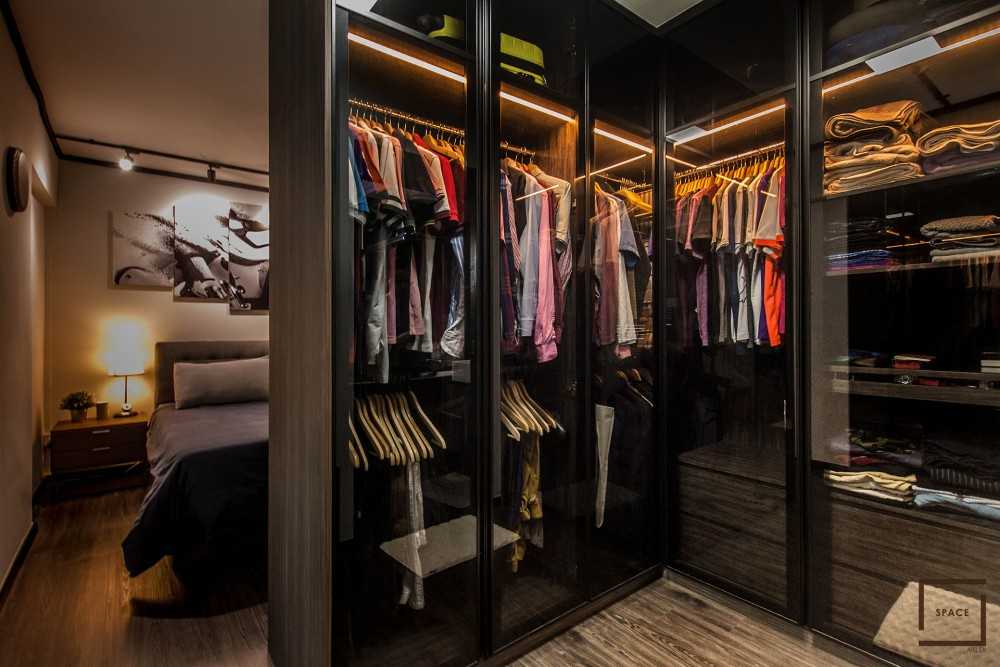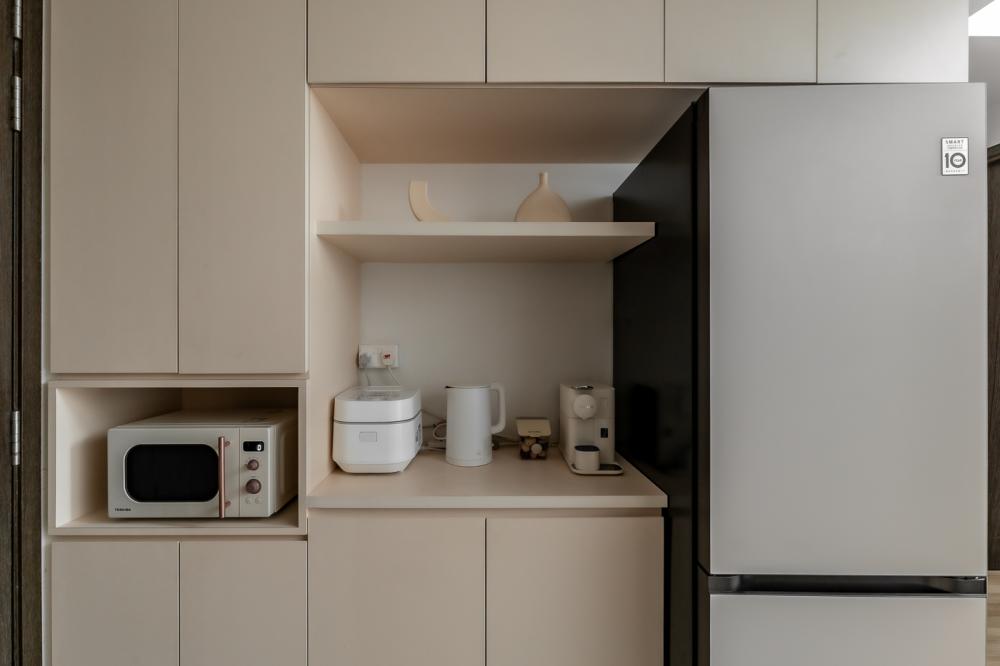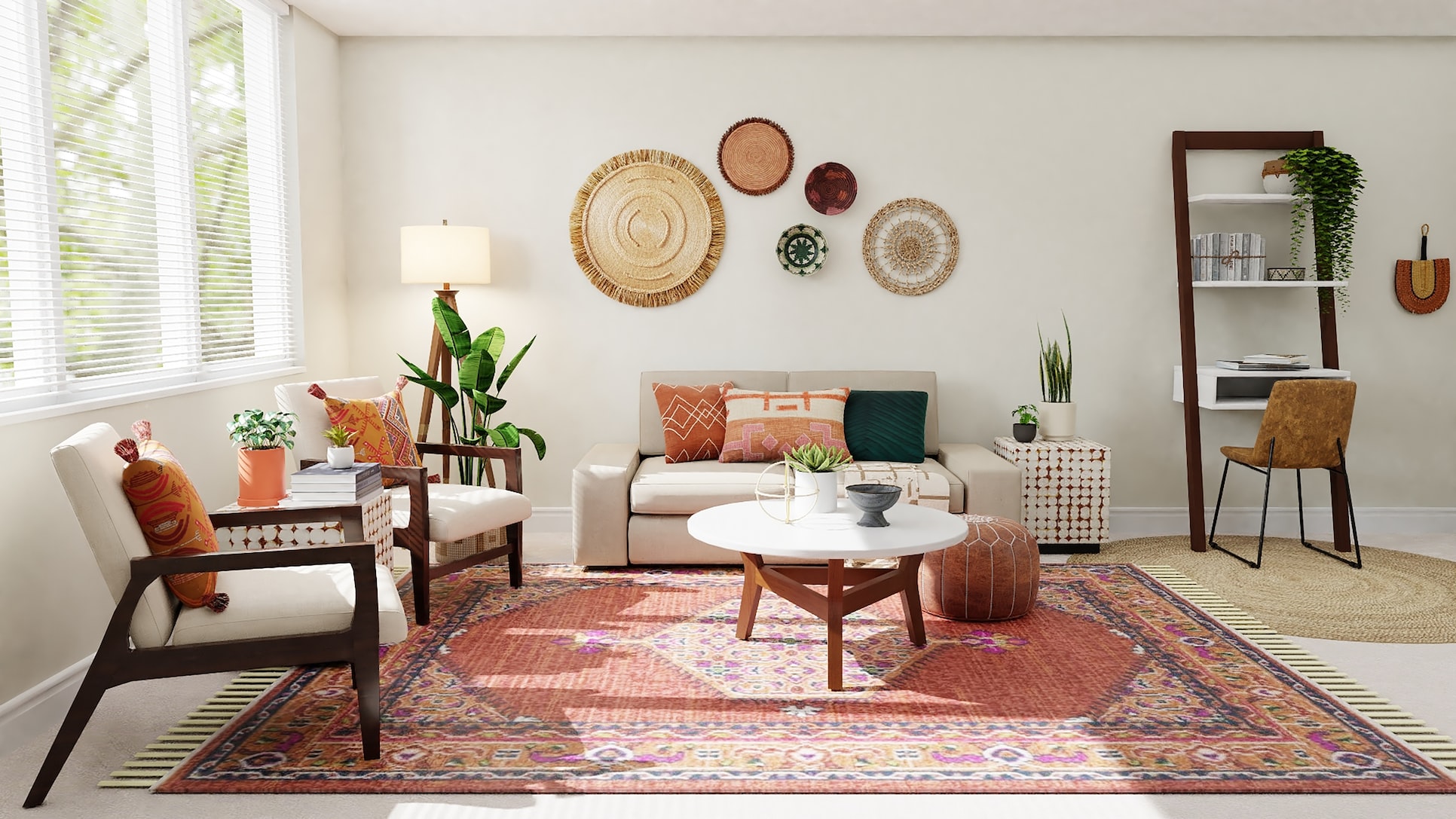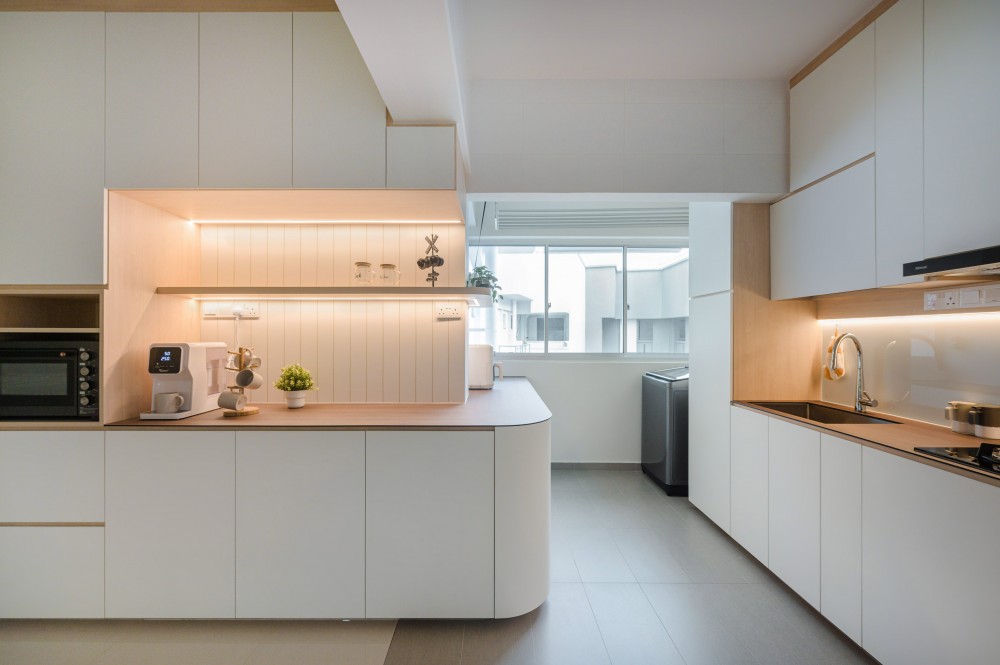How To Design A Functional And Stylish Home Office
Working from home has become increasingly popular in recent years, and today, many folks are able to work from home at least a few days within a week.
As a result, creating a functional and stylish home office has never been more important.
Whether you’re a freelancer who primarily works from home, or a working professional who does one WFH day every week, having a dedicated space to work in can help increase productivity and creativity.
In this ultimate guide, we’ll be providing tips and tricks on how to design a functional and stylish home office.
Read on to find out more!
Think About Use Cases
Before you do any planning or any designing for your home offices, the very first thing to do is think about use cases.
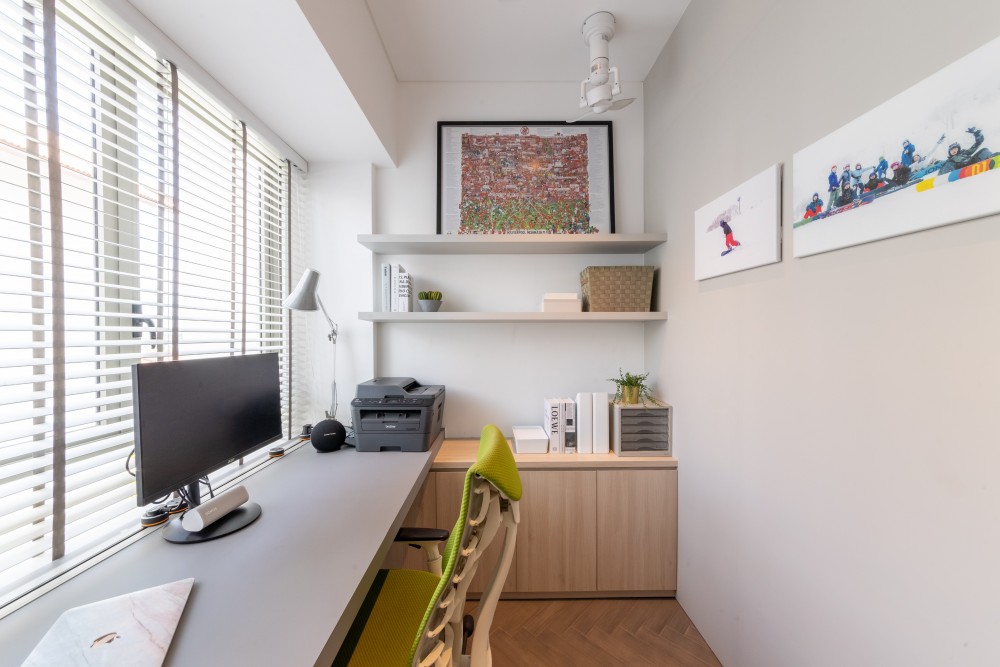

208 Ocean Drive ($260,000) by Livspace
Simply put, this means: how will you use your office?
Here are some questions to consider:
- How many people will use the office?
- How many hours a day will you spend in your home office?
- Do you need it to be sound-proof?
- Will you be taking calls in the office?
- Will you be entertaining clients or guests in the office? Do you need extra seating for clients who visit?
Once you have a concrete idea of how you’re using your home office, that’s when you can start thinking about how you’d like to design it.
Choose The Right Space
When choosing the right space for your home office, there are a few things to consider.
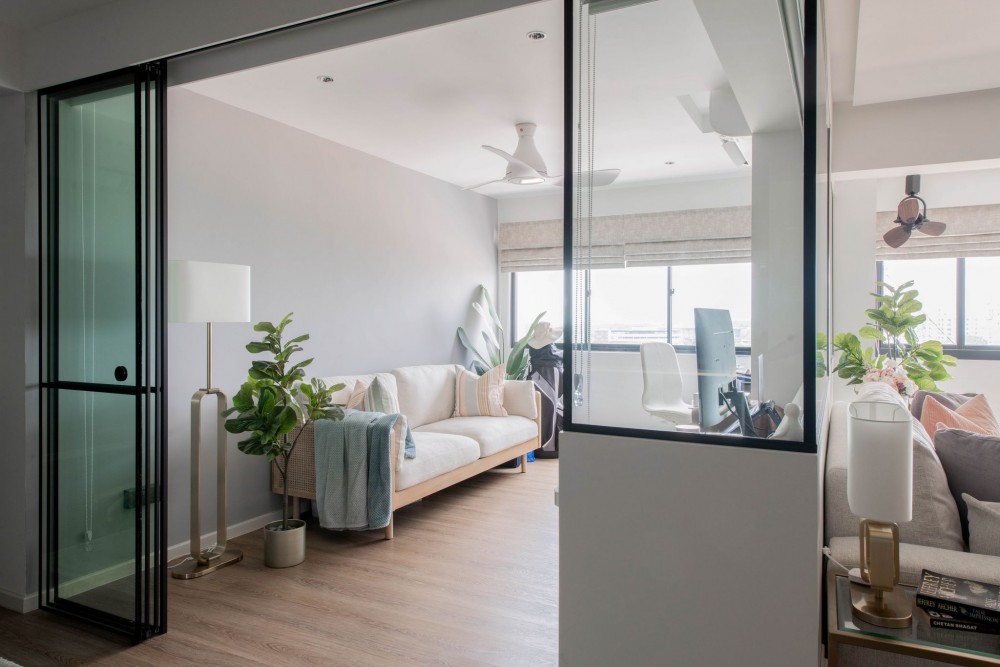

544 Pasir Ris Street 51 ($159,000) by 9 Creation Pte Ltd
First and foremost, it’s important to choose a space that is as quiet as possible. This can help minimize distractions and allow you to focus on your work.
Look for a space that is away from any noisy areas of your home, such as the living room or kitchen.
In addition to being quiet, your home office should also be well-lit.
Natural light is ideal, as it can help improve your mood and productivity. Try to choose a space that has access to plenty of natural light, or invest in a good desk lamp or floor lamp if you don’t have access to natural light.
Finally, having a space with a door that can be closed is also important. This can help you create a clear separation between your work and personal life, which is especially important if you live with others.
Obviously, if you have a spare room that you can use as a dedicated office, that would be ideal.
However, if this isn’t possible, you can set up a home office within a corner of your living room or bedroom. If you’re doing this, use screens or dividers to segregate your work area, and create a sense of privacy.
Make Use Of Natural Light
Natural light can be a powerful tool for improving productivity and mood in your home office.
The good news? In Singapore, sunshine is abundant, and it’s rarely ever gloomy outside. This makes it easy for you to take advantage of natural light.
How do you do this? Simple – just position your desk near a window.
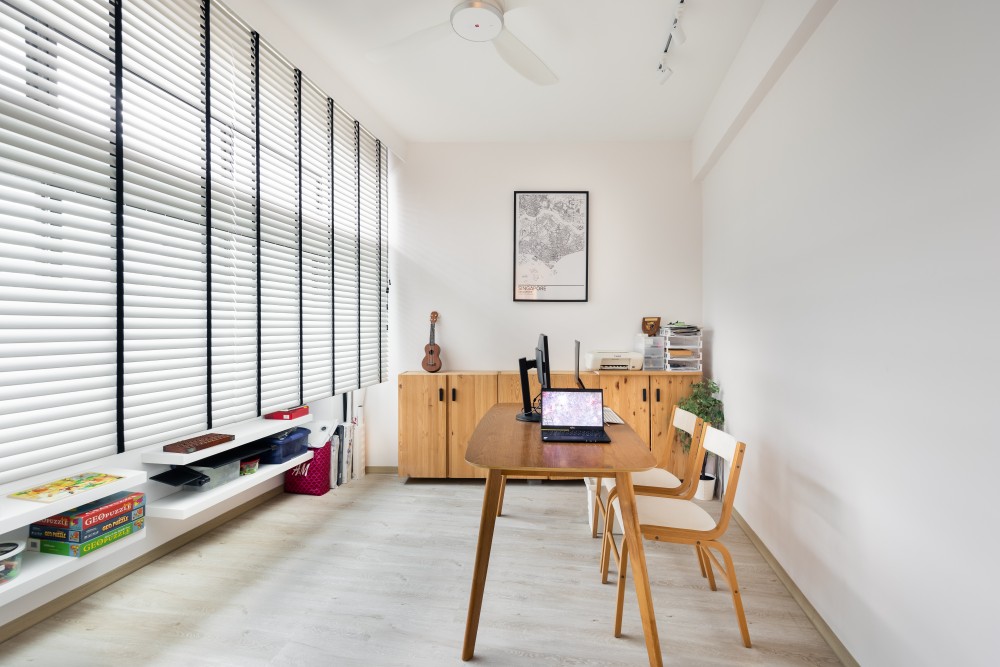

Mandarin Gardens ($75,000) by U-Home Interior Design Pte Ltd
This can help you stay connected to the outside world and provide a source of inspiration throughout the day.
When positioning your desk near a window, it’s important to consider the angle of the sun. Direct sunlight can create glare on your monitor and cause eye strain, so it’s best to position your monitor so that it’s perpendicular to the window. This will help minimise glare and create a comfortable workspace.
If you don’t have access to natural light in your home office, or if the natural light is insufficient, consider investing in a desk lamp or floor lamp.
Look for a lamp that provides bright and even lighting, as this can help reduce eye strain and improve your mood. LED lamps are a great option, as they are energy-efficient and provide a bright and consistent light.
In addition to positioning your desk near a window and investing in good lighting, there are a few other things you can do to optimize natural light in your home office.
Firstly, keep your windows clean to maximise the amount of light that enters your space.
On top of that, use light-colored surfaces to help bounce light around the room. For instance, if you’re choosing to create built-in cabinets in your study, go for a light colour instead of a dark one.
Create A Functional Storage System
A functional storage system is essential for any home office, as it helps you stay organised and productive by keeping your workspace tidy and clutter-free.
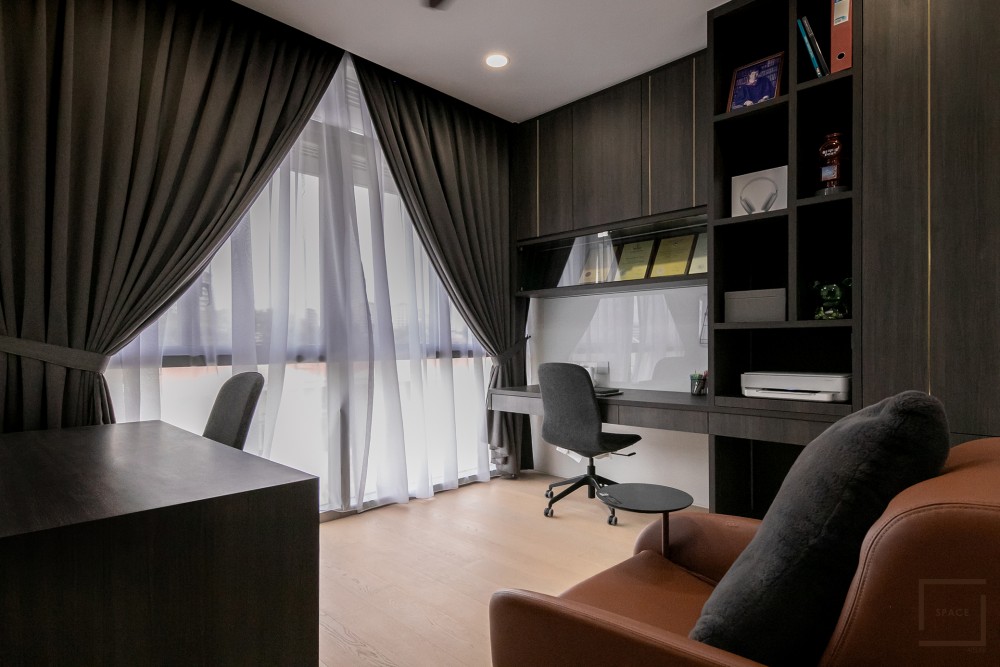

Landed @ Parkwood Collection ($125,000) by Space Atelier Pte Ltd
One of the first things to consider when designing a storage system for your home office is the type of items you need to store. This will help you determine what kind of storage solutions you need.
For example, if you have a lot of paperwork to keep track of, investing in filing cabinets or file boxes may be necessary.
On the other hand, if you have a lot of books or binders, bookshelves or wall-mounted shelves may be more appropriate.
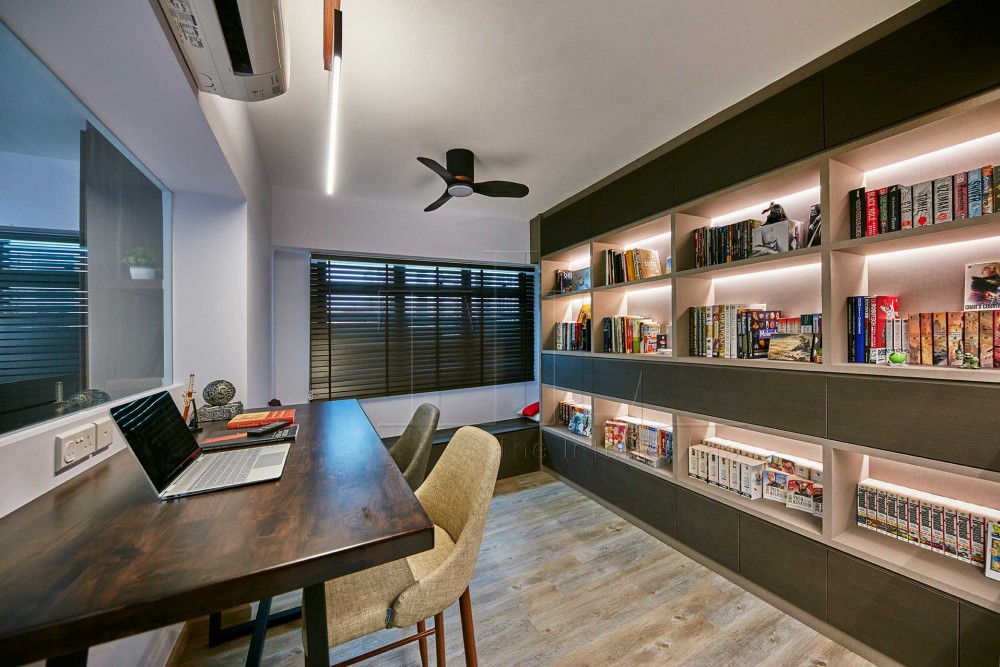

12 Cantonment Close ($70,000) by The Interior Lab Pte Ltd
Another important consideration is the layout of your storage system.
Ideally, your storage should be easily accessible, so that you can quickly find what you need. Consider grouping similar items together, and organizing them by category, such as office supplies, reference materials, or important documents.
Once you’ve determined the type and layout of your storage system, it’s important to label your storage containers.
This makes it easy to find what you need quickly and ensures that everything stays organized. Labeling can be done using a variety of methods, including sticky notes, adhesive labels, or even a label maker.
In addition to traditional storage solutions like filing cabinets and bookshelves, there are also many creative storage options that can help you maximize your space.
For example, wall-mounted magazine holders can be repurposed to hold file folders or other small items, and under-desk storage units can help keep clutter off your workspace.
Think Of What Tech You Need
Technology is a crucial aspect of any home office design. Here are some tips to consider when planning for technology.
Power outlets
Firstly, plan for enough power outlets to support your equipment. Consider the number of devices you’ll be using and their power requirements.
You don’t want to overload a circuit or have too few outlets, which can lead to clutter and unsafe conditions.
If you have a ton of devices or gadgets that need to be plugged in, consider getting a power track system instead of using conventional power outlets.
These systems are designed to distribute power throughout your workspace, with multiple outlets along a single strip. They can be mounted on walls or under desks, and some even come with USB charging ports built in.
Generally, power track systems are a great way to reduce clutter and keep cables organized, while also providing enough power for all your devices.
Cable management
Cable management is an often-overlooked aspect of home office design, but it can make a big difference in the overall look and functionality of your workspace.
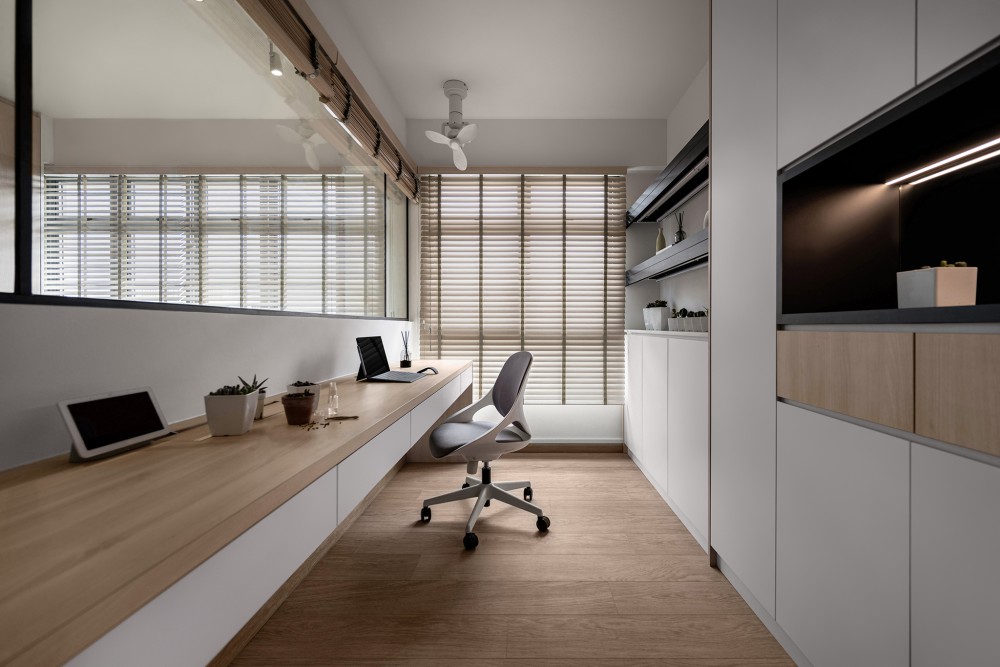

622A Tampines ($70,000) by The Interior Lab Pte Ltd
Why do we say so? Well, cables and cords can quickly become a tangled mess, which can lead to frustration and even hazards.
Here, consider using cable trays, ties, or sleeves to keep cables organized and out of sight.
Cable trays can be mounted under your desk to hold cables and power strips, keeping them off the floor and out of sight.
Cable ties are another great option for grouping cables together and keeping them neat and tidy. They can be used to bundle cables behind your desk or even on the wall.
If you have a lot of cables running from your desk to other devices or to a power source, consider using a cable sleeve. These sleeves are designed to encase all of your cables in one neat bundle, which can be especially helpful if you have a standing desk or frequently move your workspace around.
Equipment placement
Next, think about the placement of your equipment.
Consider the proximity of your equipment to power outlets and network connections. If you’re using Wi-Fi, make sure your router is within range of your office.
You may also want to consider using a Wi-Fi extender if your office is located far away from your router.
Gadgets and devices
Finally, think about what gadgets and devices will help you improve your productivity.
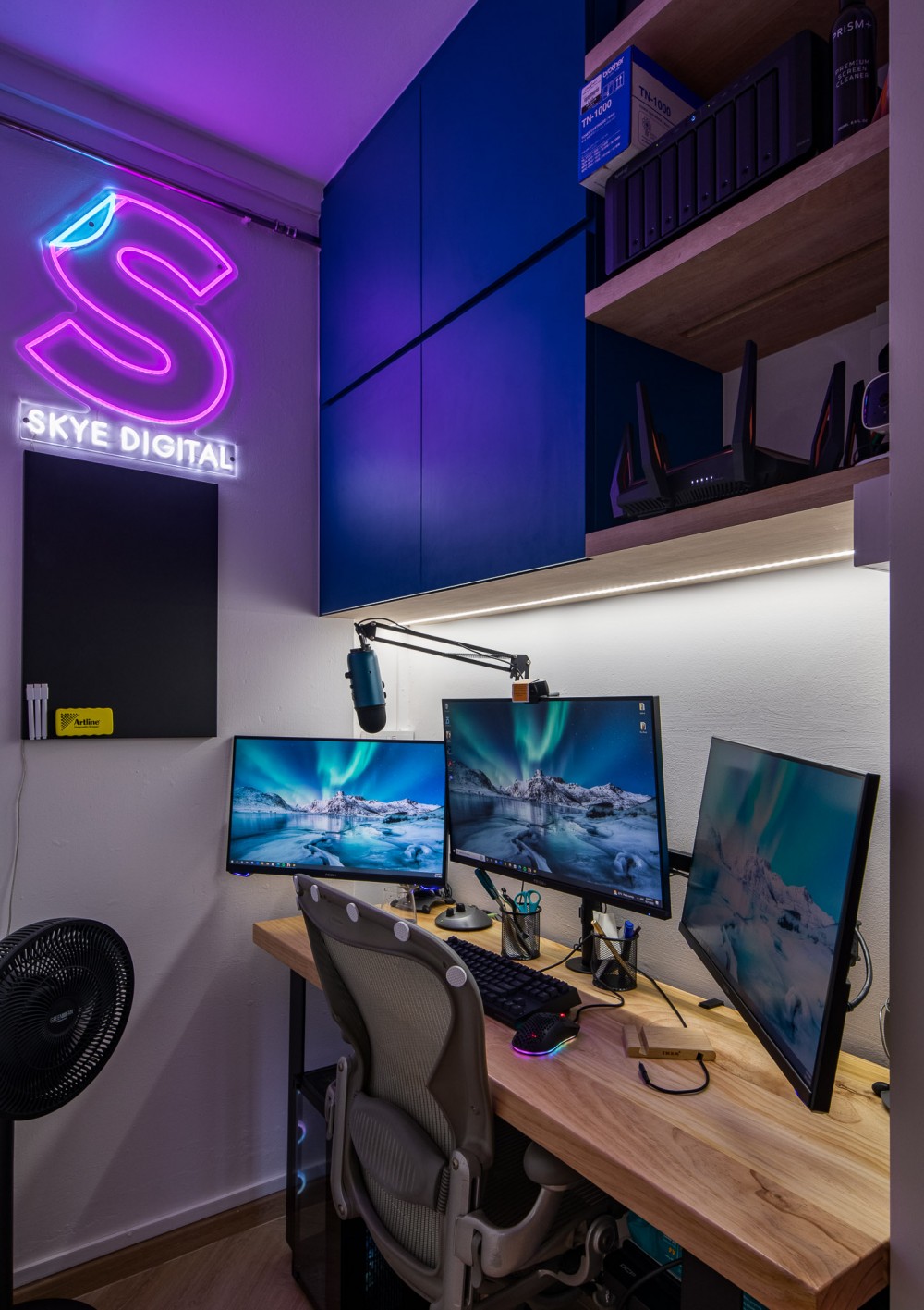

Hougang St 61 Hougang 696 ($75,000) by Mr Designer Studio
We’ve already talked about purchasing a second monitor to use – that side, some other devices that can help you improve your productivity include headphones, wireless keyboards and mice, ergonomic mouse pads, task lighting, and smart speakers.
Firstly, headphones can help you focus and block out distracting noise, especially if you’re working in a noisy environment or need to take calls or attend virtual meetings.
A wireless keyboard and mouse can provide more flexibility and freedom of movement, allowing you to work from different positions or even from a distance.
An ergonomic mousepad can help reduce strain and discomfort in your wrist and arm, which is especially important if you spend a lot of time using the mouse.
Task lighting can help reduce eye strain and improve visibility, especially if your home office doesn’t have access to natural light or if you work during nighttime hours.
Finally, smart speakers can provide convenient access to music or podcasts, help you set reminders or timers, and even control smart home devices.
Invest In A Good Desk
When it comes to buying a desk for your home office, there are a few things to consider.
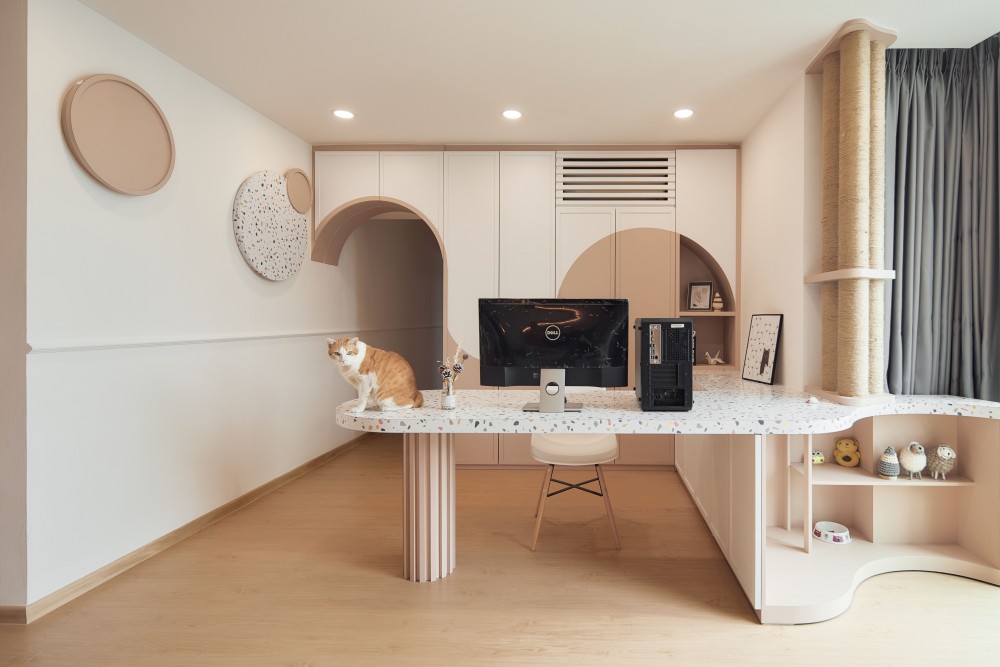

102A Punggol Field ($40,000) by Starry Homestead Pte Ltd
First and foremost, your desk should be the right height for you. This means that your feet should be flat on the floor, and your arms should be at a comfortable 90-degree angle when typing.
If your desk is too high or too low, it can cause strain on your arms and shoulders over time.
Consider the size of your desk as well.
You want to choose a desk that is large enough to accommodate your computer, keyboard, and any other items you may need for work.
(It’s common for people to have second monitors or second screens these days – if you’re planning on having this in your home office, do factor this in as well, as it’ll mean that you’ll need to buy a larger desk.)
If you want the flexibility to stand while you work, consider investing in a sit-stand desk.
These desks can be adjusted to different heights, so you can switch between sitting and standing throughout the day.
This can help improve your posture and reduce the risk of health problems associated with sitting for long periods of time.
Invest In A Good Chair
Desks aside, investing in a good chair for your home office is also essential, as you’ll be spending a significant amount of time sitting in it.
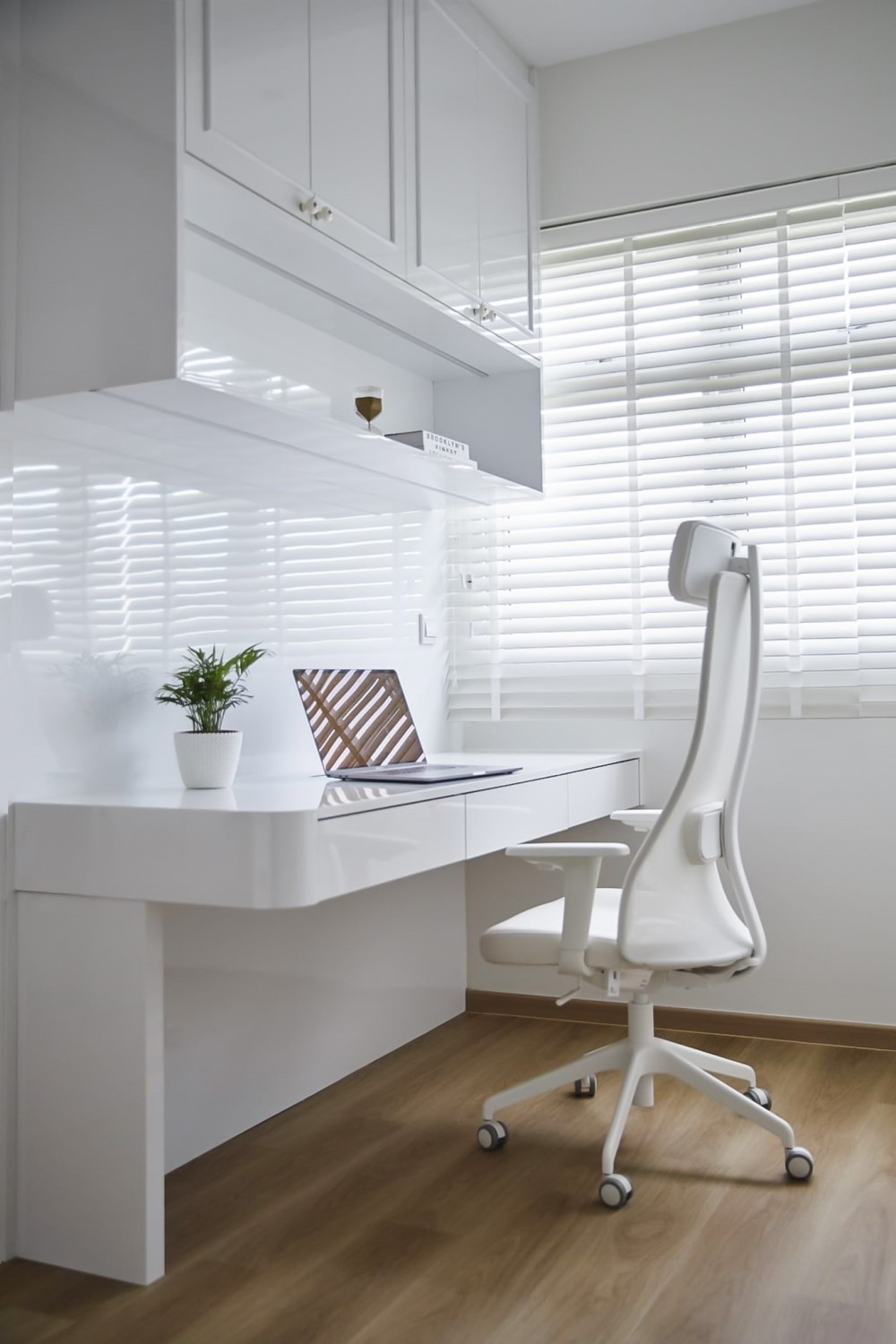

Melody Spring @ Yishun ($108,000) by Sky Creation
Look for a chair that is comfortable and ergonomic, with proper support for your back. This can help reduce the risk of back pain and other health problems associated with prolonged sitting.
Now, adjustability is key when it comes to choosing a chair for your home office.
Look for a chair that can be adjusted in terms of height, tilt, and armrests. This can help you customize your chair to your specific needs and preferences.
When choosing a chair, it’s also important to consider the materials.
Look for a chair with breathable fabric or mesh, as this can help keep you cool and comfortable throughout the day. (This is especially important here in Singapore, where it’s always sweltering hot!)
Leather chairs may look stylish, but they can be hot and uncomfortable over time. (If you typically work in an air-conditioned setting, though, they may work for you).
A Final Word On Designing A Functional And Stylish Home Office
Personally, we’d love to have one of those picture-perfect home offices (the one you see on Pinterest!), but that’s not always realistic.
Maybe you don’t have the luxury of setting aside an entire room for your home office, and you need to carve out some space from your living room.
Maybe you’ve already got a bunch of (mismached) office furniture that you need to use, and you don’t want to buy new furniture.
Maybe you have a limited budget to work with, because you’re already spending most of your budget on the other areas in your home.
You’re always going to have to work around certain limitations, and the key to doing this is to prioritise.
Always go back to those fundamental questions – “What will this space be used for? What do I need out of it?” and then go from there.
All the best in designing your dream home office!
Want to check out home renovation projects for more inspiration? Browse home office, workstation and study design ideas on Hometrust, or click the button below to get connected with expert designers!
Renovating soon? Speak to top rated interior designers.
Discuss your home renovation ideas and plans with top rated firms, recommended by past homeowners. Let us help you shortlist the most suitable interior designers for your project.

